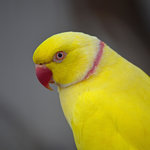Clear, 74°
Wind: mph,


What is an exotic pet? For our practice, any animal that is not a dog or cat gets labeled as an exotic appointment. This can include small mammals, birds, reptiles and more.
When I was contemplating content for this article, I was going to focus this piece on educating readers about one species and the specific details of caring for that animal. However, the truth is that the conversations I have with clients about every exotic pet I see mainly revolve around the same general principles.
We are going to highlight the key aspects of care to consider when getting any exotic pet, easily accessible resources for caring for your pet and avenues to obtain an exotic animal.
If you are thinking about getting an exotic pet, the first step I recommend is checking out a great website called EMODE pet score. EMODE is a program that was created by 18 scientists and veterinarians with expert backgrounds in public health and animal welfare science. You can search each individual animal on the EMODE website, and this will give you a pet score. For example, searching for “veiled chameleon” yields a score of difficult to expert to care for versus searching for “hamster,” which yields a score of moderate.
For any exotic pet, some general points I discuss with owners are:
Appropriate Housing/Enclosure and Temperature/Humidity
Enclosures can vary significantly between each individual species in a group (housing for a chameleon is different than a snake, although they are both reptiles) and the equipment required for setup can also vary in cost. Humidity and temperature are important, especially for reptiles, but they should be considered for all species. These can also vary between individuals (a northern blue tongue skink requires a different humidity than a Merauke blue tongue skink).
Obtain a hygrometer to measure humidity and a non-contact temperature gun to measure any point in the enclosure. It is also important to consider that the area an animal roams in an enclosure is likely not the same temperature or humidity as the top of the habitat, so placing a measuring device there could lead to inaccurate results.
Diet Recommendations
Each species is different in this category, and conducting research prior to obtaining your pet is critical. There are lots of brands out there for different diets. If you ever have a question about which to buy, please consult your veterinarian. Some companies have more detailed nutritional analysis performed for their foods to ensure they meet the needs of the pet and are therefore preferred by veterinarians. Diet also plays an important part in disease prevention. One example is rabbits, which require hay as the main portion of their diet to avoid dental disease and secondary digestive problems.
Enrichment/Social Interaction
What animal doesn’t love play time? This is an equally important part of care and welfare. For example, the Indian ringneck parakeet needs lots of time out of its enclosure and interaction with owners to prevent severe neurotic behaviors that sometimes are not reversible. Even the littlest critters, like our hamsters and gerbils, still require routine exercise. It is also important to consider when your animal will be most active – if it is nocturnal, it may not be very interactive with you during the day. Additionally, does the animal you’re considering do better in pairs or alone? How will that animal interact with other animals in the home (especially if it is a prey species like a rabbit)? Does this animal do well with children, and what are the safety concerns?
General Health Conditions
If you become familiar with some of the common conditions that we see in exotic animals, you can take steps to prevent the conditions and also know the signs to look for regarding illness. Many exotic animals that are prey species will hide illness until they are very sick, so picking up signs early truly makes the difference. For example, guinea pigs are predisposed to foot problems due to their body conformation, so ensuring appropriate bedding and maintaining a good weight can help prevent inflammation. Rabbits that stop eating for 12 to 24 hours are already considered critical due to their type of gastrointestinal tract and need immediate medical attention. Most reptiles need calcium supplementation to prevent bone weakness and fractures.
Where do I get an exotic animal?
I recommend checking out EMODE for good resources. Rescues are often overlooked when getting an exotic pet but are a great resource for owners.
When getting your pet, it’s important to be sure to quarantine your animal away from others for the recommended period of time (usually 60 days, but this can vary for different species) to prevent transmission of disease and monitor for signs of illness.
Exotic/Wildlife Trade
Although this is a difficult topic to discuss, the exotic illegal trade continues to impact animals everywhere and decimate populations. When getting your exotic pet, it’s vital to try and determine if the animal was taken illegally from the environment. Unfortunately, one of the biggest parts of the exotic pet trade is the illegal capture and sale of exotic animals. Extensive work is being done by veterinarians, scientists and volunteers to combat this, but client education is a key part as well.
Comments
No comments on this item Please log in to comment by clicking here